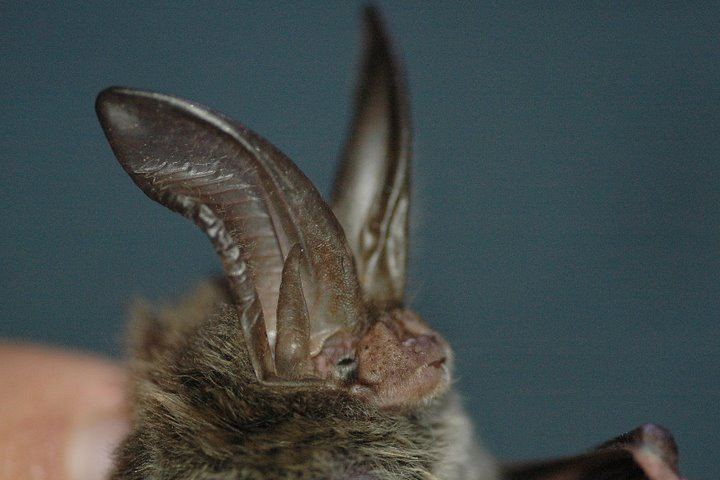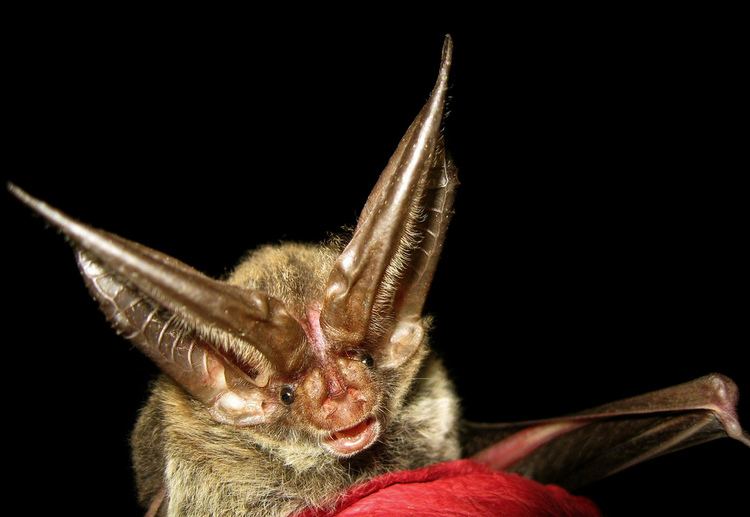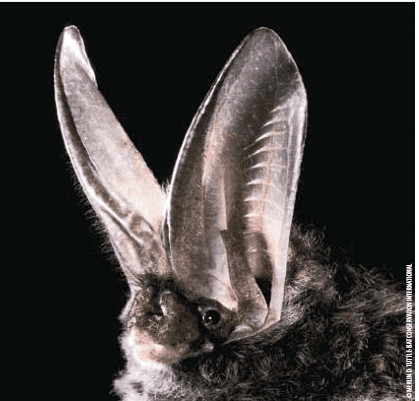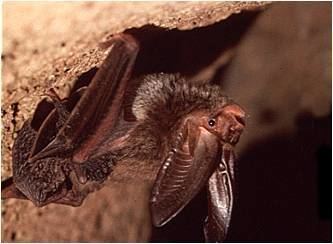Kingdom Animalia Order Chiroptera Genus Corynorhinus Higher classification Corynorhinus | Phylum Chordata Family Vespertilionidae Scientific name Corynorhinus rafinesquii Rank Species | |
 | ||
Similar Corynorhinus, Bat, Townsend's big‑eared bat, Southeastern myotis, Seminole bat | ||
Rafinesque s big eared bat colony texas parks and wildlife official
Rafinesque's big-eared bat (Corynorhinus rafinesquii), sometimes known as the southeastern big-eared bat, is a species of vesper bat native to the southeastern United States.
Contents
- Rafinesque s big eared bat colony texas parks and wildlife official
- Virginia s endangered rafinesque s big eared bat
- Description
- Diet
- Roosting
- Conservation status
- References

Virginia s endangered rafinesque s big eared bat
Description

As its name implies, this species has large ears that are over an inch long. The genus name Corynorhinus means "club-nosed." Similar to the Townsend's big-eared bat, this species has two lumps on either side of its nose. Rafinesque's big eared bat is a medium-sized bat with a length of about 7.5–10 cm (3-4 inches) and a wingspan of 25–30 cm (10-12 inches). These bats range in mass from 6-13g (0.2-0.45 ounce). The bat is gray on the dorsal side and white on the underside. The ears and face are a pinkish-brown color while the forearm and wing membrane is dark brown.

Some sources report maximum lifespan as 10 years, although robust data are lacking. More research has been done on the closely related Townsend's big-eared bat and estimates for this species' lifespan range from 16 up to 30 years in the wild.

While uncommon throughout its range, this species is found in a variety of habitats from coastal plains, riparian areas, to mountainous areas like the Great Smoky Mountains National Park. In all cases, these bats are associated with large swathes of relatively mature forest.
Diet

Rafinesque's big-eared bats, like all bats in the southeastern United States, are insectivorous, nocturnal, and locate food primarily by echolocation. They consume a wide range of insects, including mosquitoes, beetles, and flies, although moths make up 90% of the diet. Insects can be caught by gleaning (e.g., from foliage or cave walls) or on the wing (i.e., aerial hawking).
Roosting

Due to seasonality, geographical location, and frequent roost-switching, C. rafinesquii can be found in a variety of locations. Tree roosts may be in living or dead trees but are usually quite large (one study reported average diameter at breast height of tree roosts to be 79 cm with a height of 18.5m). Rafinesque's big-eared bats can also be found in abandoned buildings, under bridges, in wells, and in caves.
Conservation status
While listed as least concern by the International Union for the Conservation of Nature (previously listed as vulnerable), Rafinesque's big-eared bats are listed as a Candidate II Species of Concern by the U.S. Fish and Wildlife Service. Additionally, it is listed as threatened by state agencies throughout most of its range.
White nose syndrome is a serious disease caused by a fungal pathogen that has devastated several species of bats in the eastern United States. Unlike some other species of bats with which it shares its range, the Rafinesque's big-eared bat does not appear to be affected by the disease. Hypothesized reasons include use of hibernacula that may not provide optimal growing conditions for the causal agent (the fungus Pseudogymnoascus destructans), relatively frequent arousals from torpor, and/or the usage of shallow bouts of torpor by this species.
